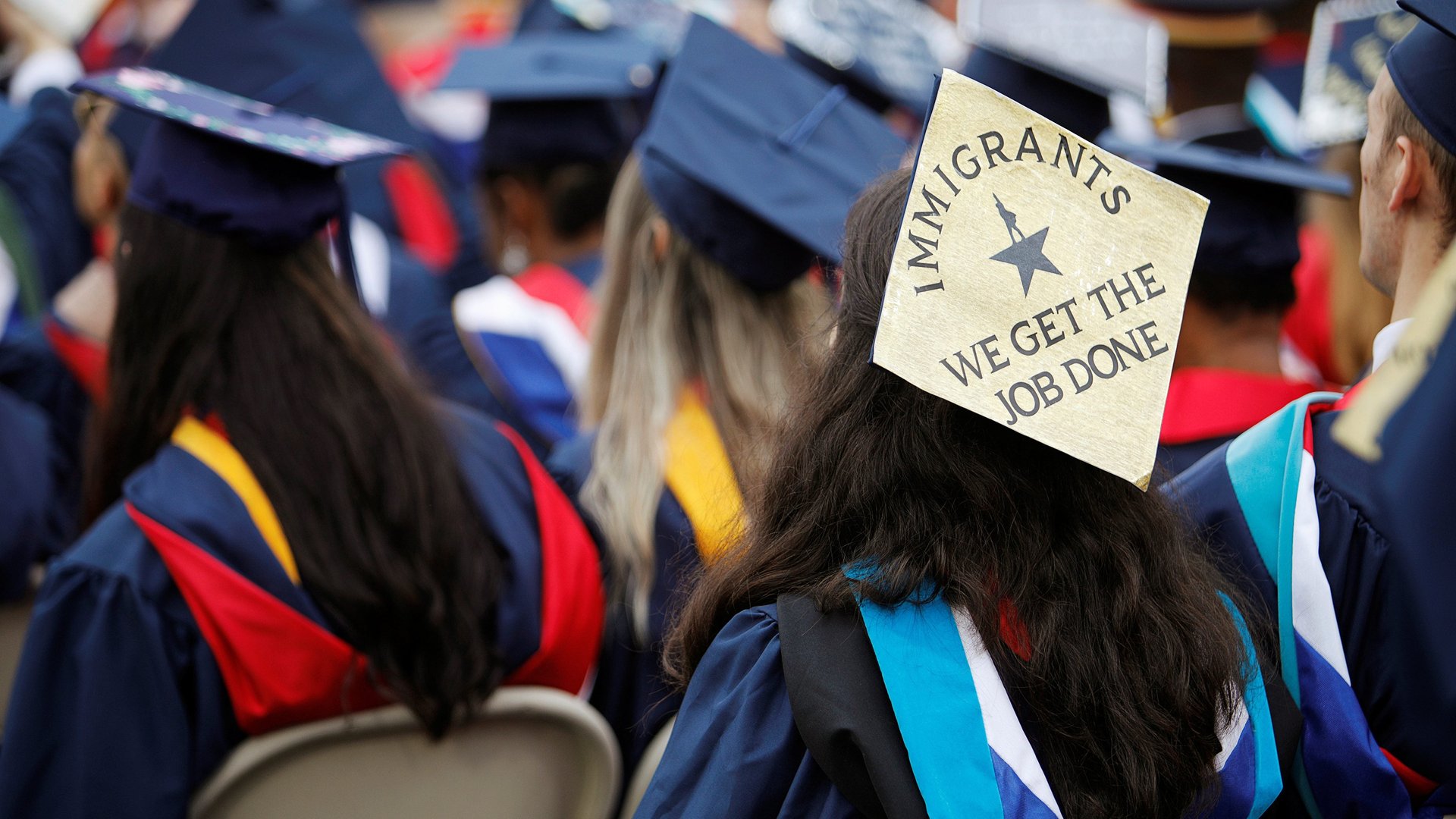US universities have a $45 billion reason to fight tooth and nail for international students
Update (July 14): A US district judge announced today that the government is rescinding the new visa policy that would have made international students take at least one in-person class.


Update (July 14): A US district judge announced today that the government is rescinding the new visa policy that would have made international students take at least one in-person class.
America’s most reputed universities are going all out to protect their international students—and, in-turn, themselves.
Yesterday (July 8), Harvard University and Massachusetts Institute of Technology (MIT) sued the US government for its recent decision to not extend or offer new visas to students whose course load is entirely online.
The lawsuit seeking a temporary restraining order as well as a permanent decision declaring the move “unlawful” said:
ICE’s [Immigration and Customs Enforcement] action proceeded without any indication of having considered the health of students, faculty, university staff, or communities; the reliance of both students and universities on ICE’s statements that the preexisting exemptions would be “in effect for the duration of the emergency” posed by the Covid-19 pandemic, which continues to this day; or the absence of other options for universities to provide their curricula to many of their international students. Certainly, no notice-and-comment period was provided.
[…]
By all appearances, ICE’s decision reflects an effort by the federal government to force universities to reopen in-person classes, which would require housing students in densely packed residential halls, notwithstanding the universities’ judgment that it is neither safe nor educationally advisable to do so, and to force such a reopening when neither the students nor the universities have sufficient time to react to or address the additional risks to the health and safety of their communities. The effect—and perhaps even the goal—is to create as much chaos for universities and international students as possible.
Besides the lawsuit, several colleges, including New York University—which has the highest number of international students in the US—Columbia, and Brown, have said they would design hybrid learning models to accommodate vulnerable international students navigate the Trump administration’s decision.
“[R]equiring international students to maintain in-person instruction or leave the country, irrespective of their own health issues or even a government-mandated shutdown of New York City, is just plain wrong and needlessly rigid,” NYU president Andrew Hamilton said in a statement. “If there were a moment for flexibility in delivering education, this would be it.”
The opposition perhaps stems from the fact that losing international students could cost these universities dearly.
In 2018-19, international students paid nearly $45 billion (Rs3.4 lakh crore) in tuition fees, living expenses, and other spending in the US. Chinese and Indian students are the biggest contributors to this income.
Money-making machines
Typically, international students’ fees is more than double the in-state tuition.
US universities already stand to lose at least $3 billion in fall 2020 because of anticipated declines in international student enrollment due to Covid-19, a survey by non-profit NAFSA indicated.
The strain on finances for some universities could be make-or-break. “[T]here are master’s programs in STEM and business that rely almost entirely on tuition revenue from international students,” Dick Startz, professor of economics at the University of California, Santa Barbara wrote in the Brookings’ Brown Center Chalkboard on June 18. “If international students don’t enrol…such programs may be at great risk.”
Besides fees, students from abroad also spend heavily on housing and other goods. International students contributed more than $30 billion to the US economy in the 2014-2015 academic year, the Wall Street Journal reported.
Too little too late
Since the coronavirus outbreak, international students have been stuck between a rock and a hard place, as they decide whether they want to stay back in the US or return to their home countries.
Now, just a couple of months away from the start of August/September session, experts say many students would have secured funds and accommodation to continue or start their studies in the US. In some cases, travel restrictions may have hindered attempts to return home. And while transferring to a school with in-person classes to maintain status is an option on paper, it’s very late in the day to actually do that.
“The sudden change is highly disruptive, burdensome, and/or impossible to comply with for both schools and their F-1 students,” said Anna Stepanova, assistant managing attorney at Maryland-based Murthy Law Firm. Especially since universities started to accommodate the new normal. They put specific plans in place, making large expenditures, including getting limited dorm spaces ready and preparing professors for online instruction, she added.
Harvard, for instance, has curbed undergraduate on-campus residency to 40% of capacity for the upcoming term and MIT has assigned undergraduate on-campus residency for the fall to members of the rising senior class and a limited number of additional students only.
These are decisions made over months, and ICE’s guidance is demanding quick overhauls that are, in some cases, just not doable. Among other things, updating the authorities about courses by July 15 is impossible “because students are generally not required to register for particular classes until closer to the start of the semester,” the lawsuit filed under the Administrative Procedures Act says.
If ICE ignores the students’ plight altogether, there is another disaster waiting in the wings at American universities.
Many of the classes are taught by older staff that is prone to worse health complications. The median age of the faculty members of Harvard’s Faculty of Arts and Sciences, for instance, is over 60. Dozens of them serve as advisors to the government. “Putting these faculty members at increased risk jeopardises their ability to help society respond to the coronavirus crisis,” the lawsuit says.
Correction: An earlier version of this article stated that international students paid nearly $45 billion in tuition fees in the US in 2018-2019. This amount includes living expenses and other spending.